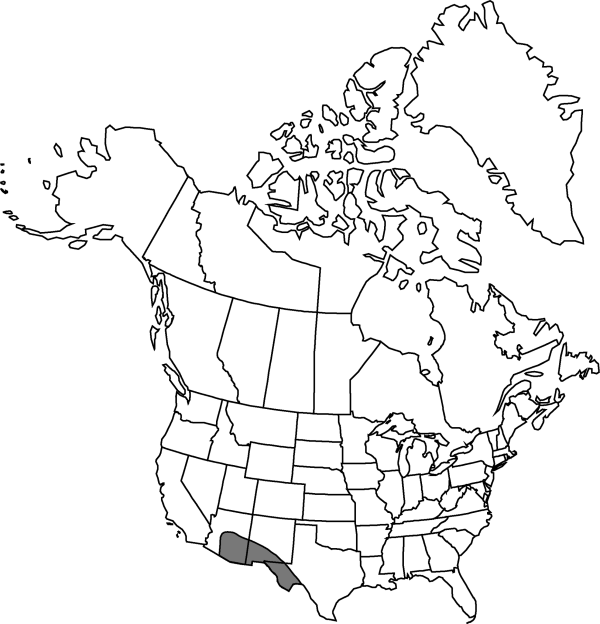Difference between revisions of "Portulaca suffrutescens"
Bot. Gaz. 6: 236. 1881.
FNA>Volume Importer |
imported>Volume Importer |
||
| (2 intermediate revisions by 2 users not shown) | |||
| Line 46: | Line 46: | ||
|publication year=1881 | |publication year=1881 | ||
|special status= | |special status= | ||
| − | |source xml=https:// | + | |source xml=https://bitbucket.org/aafc-mbb/fna-data-curation/src/2e0870ddd59836b60bcf96646a41e87ea5a5943a/coarse_grained_fna_xml/V4/V4_1019.xml |
|genus=Portulaca | |genus=Portulaca | ||
|species=Portulaca suffrutescens | |species=Portulaca suffrutescens | ||
Latest revision as of 21:56, 5 November 2020
Plants perennial; roots tuberous. Stems stiffly erect, suffrutescent; trichomes conspicuous at nodes and in inflorescence; branches (8–)15–30 cm. Leaf blades linear, terete, (4–)8–20(–30) × 0.5–2.8 mm, apex acute to subacute; involucrelike leaves 6–9. Flowers 25 mm diam.; petals orange, brown-orange, copper, or bronze, color often deepening at base, obcordate or emarginate, 7–12 × 4–5.5 mm; stamens 25–35; stigmas 4–7(–8). Capsules subglobose, 2.5–5 mm diam. Seeds leaden, slightly iridescent, 0.5–0.65 mm; surface cells loosely arranged in distinct rows, raised, stellate, tubercles usually present. 2n = 8.
Phenology: Flowering spring–late summer.
Habitat: Rocky slopes, flats, grasslands, roadsides, sandy or gravelly soils along streams
Elevation: 900-2100 m
Distribution

Ariz., N.Mex., Tex., n Mexico.
Discussion
In the nonflowering condition, Portulaca suffrutescens resembles P. pilosa, although P. suffrutescens is stiffly erect. Another characteristic of this species is elongation of the internodes such that the overall impression of density of trichomes appears to be less than in P. pilosa. This feature will not be apparent in immature plants, or in those growing in dry conditions in which little internode elongation may have taken place. Immature seeds appear black, with rounded tubercles on the abaxial spine.
Selected References
None.